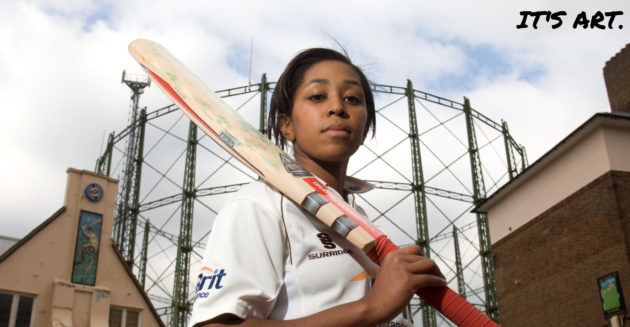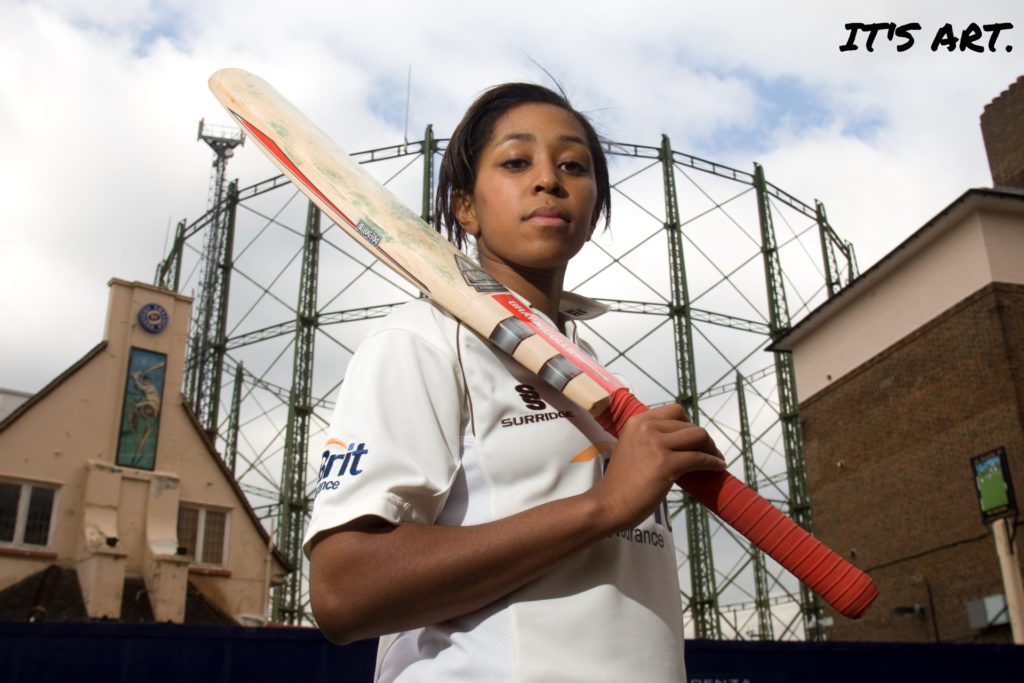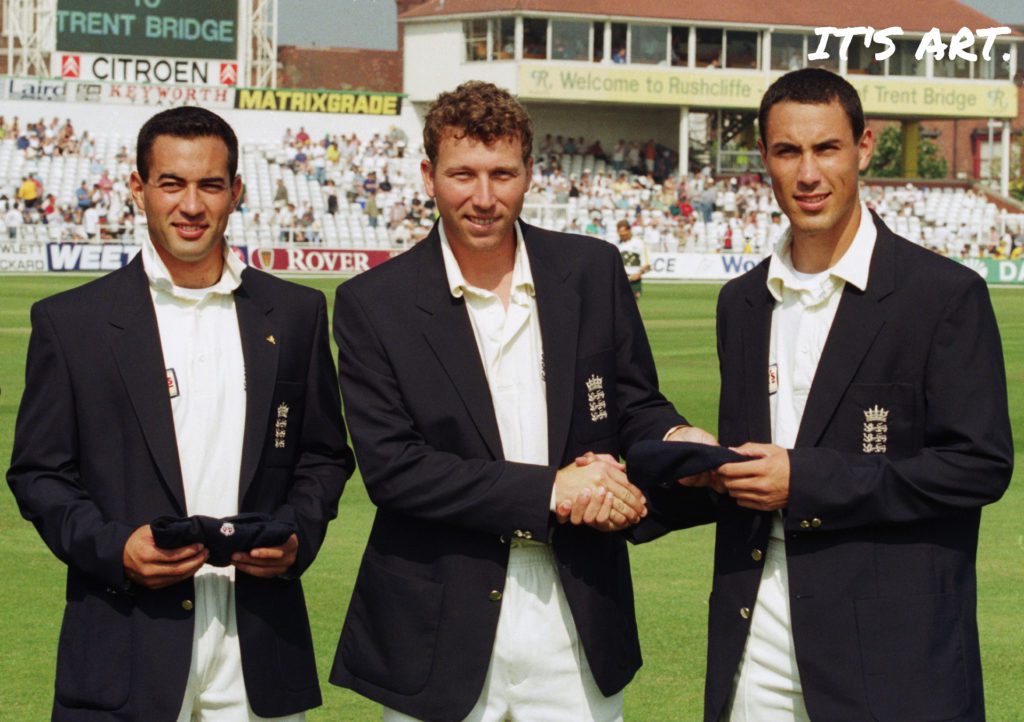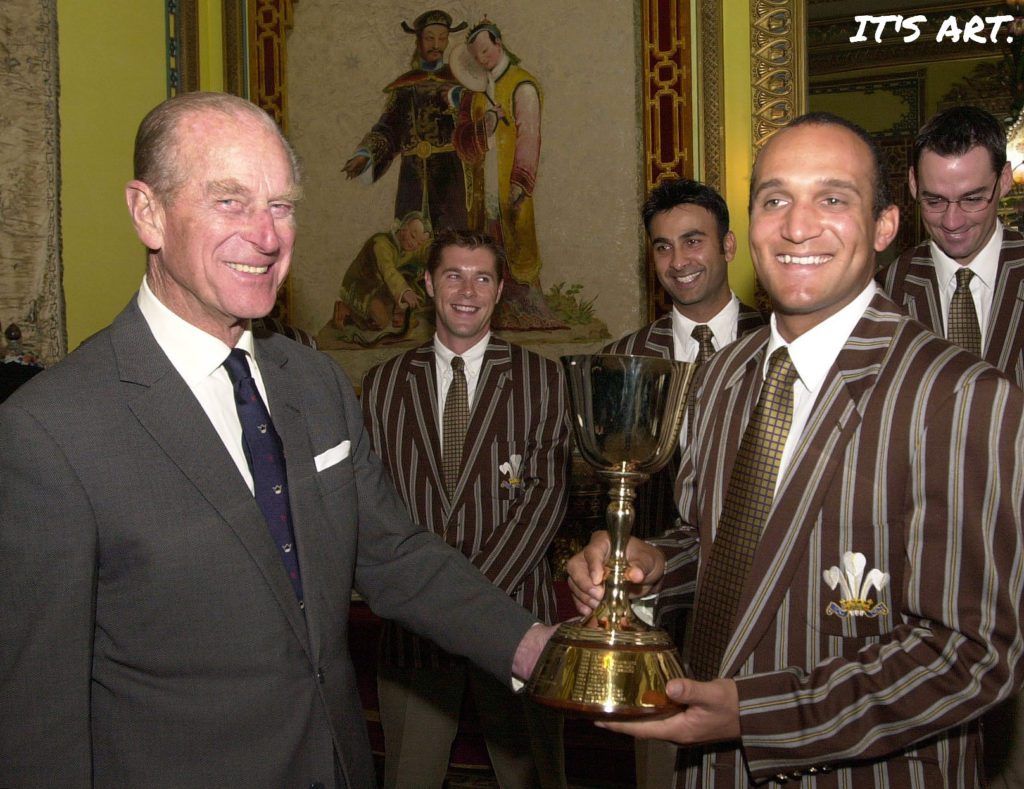Surrey County Cricket Club have launched a new campaign to engage with younger audiences and to help build a strong connection with the history of the game and the power of the sport.
The campaign will build on something cricket fans already know: it’s not just sport, it’s art.
Surrey and the Surrey Cricket Foundation are challenging young people to recreate iconic photos from the history of Surrey and of cricket at The Kia Oval as pieces of art for the chance to win some brilliant prizes.
To learn more about the campaign details click here.
There are three categories to choose from: Surrey Today, Surrey Legends and Internationals at The Kia Oval (post-2000).
To see the Surrey Today category, click here and to see the Internationals at The Kia Oval category click here
If Surrey Legends are your thing, however, scroll through the pictures below, make your choice of which to recreate as art and then keep reading to the bottom of the page to learn all about these incredible moments and inspiring people!
Surrey Legends
Keep reading to learn more about each image…
Surrey Legends
Micky Stewart
Micky Stewart OBE (born 16 September 1932) has served Surrey as a player, captain, coach, Cricket Manager and President. He first visited the Oval during the Second World War, has been a member of the club since 1947 and made his playing debut in 1954. He became a mainstay in a Surrey side that would win a record seven Championships in a row. His son, current Director of Cricket Alec Stewart, is a club legend in his own right.
Micky captained Surrey between 1963 and 1972, winning the County Championship as Captain in 1971. After retiring, he became a manager at the club and later for England until 1992. He then worked for the ECB until 1997.
Stewart was awarded the OBE in 1998 for services to cricket. His son, Alec Stewart, went on to play over 100 Tests for England.
The Stewart family’s legacy is literally imprinted on the walls of The Kia Oval; if you’re arriving via the Vauxhall Station end of the ground, you are likely to make your entrance via the ‘Alec Stewart Gate’ and, if you are a member, it’s very likely that you would choose to watch your cricket from the Micky Stewart Members Pavilion.
In 2022, to celebrate Micky’s 90th birthday, the entire stadium was renamed his honour and – as if written in the stars – Surrey would win their 21st County Championship title and the temporarily renamed ‘Micky Stewart Oval’ in September 2022.
This picture was taken during practice at the Oval, on 28 April 1953.
Ebony Rainford-Brent
Ebony Rainford-Brent is one of the most iconic figures in the history of Surrey County Cricket Club and English cricket as a whole.
Ebony was the Captain of the Surrey Women’s team and was the first black woman to play for England. She was a member of the England team that won the 2009 Women’s Cricket World Cup, beating New Zealand by 4 wickets in the final on 22 March 2009.
After retiring from cricket, Ebony would continue to influence and inspire – but this time from the board room!
In 2020, she launched the African-Caribbean Engagement (ACE) programme, aimed at encouraging engagement with cricket within the black community.
You may well notice Ebony from her many appearances on BBC Sport, Sky Sports Cricket and many more channels besides, but this picture was taken in 2008 as part of a photoshoot for Surrey CCC.
Jan Brittin
Jan Brittin is a real trailblazer in women’s cricket for both Surrey and England.
Jan represented Surrey between 1977 and 1998 and coached youngsters at the club after her retirement. She became England’s leading run-scorer in the home World Cup victory in 1993, notching up centuries against Denmark and India before taking the winning catch in the final against New Zealand. An athletic fielder, she holds the record for the most World Cup catches with 19 and was awarded an MBE in 1999 for services to cricket. Brittin also co-founded Kwik Cricket with Mike Gatting to increase the prominence of cricket in state schools.
Cricket came relatively late in the day: at 12 years old her grandparents took her to a Steam Engine Fair, where she was attracted to a catching machine.
Her catching skills were such that she was recruited on the spot for a local club, Tadworth, by the lady operating the machine. Her county debut and Junior England soon followed. Her first international appearance came at home against West Indies in 1979, aged 19.
This picture was taken during the third Test Match of the New Zealand Women’s tour of England on 28 July 1984 at the St Lawrence Ground, Canterbury, United Kingdom.
Sylvester Clarke
Batsmen feared coming to The Oval for a decade after Sylvester Clarke’s arrival at Surrey in 1979.
He was as brutal with a ball in hand as he was friendly when he came off the field.
Limited to 11 Tests for West Indies by having to compete with a succession of greats and then joining the rebel tour to South Africa, Clarke instead devoted to making life misery for domestic batsmen with a combination of fierce pace and alarming lift. Many of the 591 first-class wickets he took for Surrey – out of 942 overall – were matched by bruised and broken bones and he probably did as much to promote the wearing of helmets as anyone in the game. Sadly he had little time to look back on his career, passing away when he was just 44 in December 1999.
“Batsmen genuinely feared him,” remembers friend and team-mate Monte Lynch.
In 2021 a Roof Terrace bar, ‘Sylvester’s’, was named in the great man’s honour at The Kia Oval – it sits atop the Galadari stand and offers what many consider to be some of the best views in world cricket!
Molly Hide
Mary Edith ‘Molly’ Hide (24 October 1913 – 10 September 1995) was one of the great pioneers of women cricket in its infancy, captaining England for 17 years between 1937 and 1954, and representing the 3 Feathers of Surrey between 1937 and 1958.
Molly was a standout athlete, and also represented England at Lacrosse – making her a dual international!
Hide played in the first of all women’s Test matches (at Brisbane in 1934), was given the captaincy of the South of England team in 1936 and then the national team captaincy a year later. Test cricket would go on hiatus for 11 years for World War 2, during which time Molly would spend her time working on her father’s farm, but upon its resumption in 1948 she would pick up right where she left off, captaining England on their tour of Australia.
Molly’s life was one devoted to cricket, and after her playing career came to an end she served as a selector, manager, broadcaster, and administrator. Almost 60 years after he first Test appearance, she was guest of honour at Lord’s when England’s women cricketers won the 1993 World Cup.
This picture is of Molly, as the team Captain for the England XI, leading her team onto the field in the all-women cricket match against The Rest XI at the Kingston Cricket Festival on 10 September 1952 at the Hawker’s Sports Ground in Kingston-upon-Thames, Surrey, England.
Jack Hobbs
Sir Jack Hobbs (16 December 1882 – 21 December 1963) played for Surrey from 1905 to 1934 and for England in 61 Test matches between 1908 and 1930.
Known as “The Master”, he is considered one of the greatest batters in the history of cricket. He is the leading run-scorer and century-maker in first-class cricket, with 61,237 runs and 197 centuries.
Born into poverty in 1882, Hobbs wished from an early age to pursue a career in cricket. His early batting was undistinguished, but a sudden improvement in 1901 brought him to the attention of local teams. In 1903, he successfully applied to join Surrey, with the support of England batter Tom Hayward. His reputation grew and when he qualified to play for Surrey, he scored 88 on his first-class debut and a century in his next game. Over the following seasons, he established himself as a successful county player and in 1908 made his Test debut for England, scoring 83 in his first innings.
After serving in the Royal Flying Corps during the First World War, he maintained his reputation when cricket resumed in 1919, but his career was threatened by appendicitis, which caused him to miss most of the 1921 season. When he returned, he was a more cautious batter and used a safer style of play. Subsequently, he became more consistent and scored prolifically in both Test and domestic cricket until his retirement. In this period, he played some of his most acclaimed innings.
Ben and Adam Hollioake
Adam and Ben Hollioake were a remarkable pair of cricketing brothers who would both represent Surrey and England during their careers, having originally been born in Australia.
Adam Hollioake is the older brother, and represented Surrey from 1992 – 2004, and played for England between 1997 and 1999.
Adam was known as an all-rounder, and he captained Surrey from 1997 to 2003, winning three County Championships. He also would captain England cricket team in One Day Internationals.
Surrey fans named Adam Hollioake their preferred Captain of Surrey’s Greatest XI – voted for in 2019 to celebrate 175 of Surrey CCC.
Younger brother Ben was himself an all-rounder, and he too represented both Surrey and England as a cricketer.
Ben made his first-class debut in 1996 with Surrey, representing the 3 Feathers until 2001, and represented England between 1997 and 2002. He made two Test appearances and earned 20 ODI caps.
Ben sadly passed away in a tragic car accident, aged just 24 in 2002 whilst visiting Australia.
The cricketing world would unite in grief over the passing of such a wonderful, talented young man, and his legacy remains strong to this day.
At Surrey, specifically, the Club vowed to ensure his name lived on.
After speaking with the Hollioake family, it was decided a suitable tribute would be for the Club to establish a community classroom at The Oval bearing his name.
The Ben Hollioake Learning Centre has now been open for sixteen years, allowing over 8,000 local children the chance to play cricket and experience The Oval, a world class sports ground right in the heart of their community.
The centre was designed to allow young people from Kennington, Vauxhall and the wider Lambeth area to come to the ground as part of their schooling, with the sessions combining an introduction to cricket with computing lessons.
Together, Adam and Ben will forever go down in history as only the third set of brothers to make their England Test debut in the same game. In this photo, Adam Hollioake (left) and his brother Ben (right) collect their England caps from England Captain Mike Atherton before the fifth test against Australia held at Trent Bridge on the 7 August 1997.
Monte Lynch
There were few more exciting batters to watch in English cricket in the 1980s than Monte Lynch.
An early childhood spent on the east coast of Guyana was followed by moving to live in Surrey, making his first-class debut aged 19 at a time when he remembers the county squad being fitted out in gaudy brown tracksuits.
His best form in the mid-1980s coincided with a lengthy ban for having joined the West Indies rebel tour of South Africa in 1983-84 and ended his brief career with Guyana too. When he was available again, England picked him for three one-day internationals against West Indies in 1988, which proved unsuccessful, and he might well have been given further opportunities but for a broken and dislocated ankle a year later which would limit his movement on a long-term basis.
Leaving Surrey after the 1993 season, Lynch extended his county career – which brought 18,235 first-class runs and 367 catches mostly pouched in the slips – through two more years at Gloucestershire.
His coaching career has taken him to Royal Grammar School in Guildford, a variety of posts around the world and, more recently, the London Schools Cricket Association. He remains a regular visitor to The Kia Oval and is now a coach for the ACE Programme.
This photo is of Monte Lynch hitting a four off Leicestershire at the Oval, July 1981.
Ken Barrington
Ken Barrington (24 November 1930 – 14 March 1981) was an English international cricketer who played for the England cricket team and Surrey County Cricket Club in the 1950s and 1960s. He was a right-handed batter and occasional leg-spin bowler, known for his jovial good humour and long, defensive innings.
His 256 in the Fourth Test at Old Trafford in 1964 is the third highest score for England’s Men against Australia and the highest since the Second World War. Barrington twice made centuries in four successive Tests and was the first England male batter to make hundreds on all six traditional Test grounds: Old Trafford, Edgbaston, Headingley, Lord’s, Trent Bridge and The Oval.
His Test career ended when he had a heart attack in Australia in 1968, even though he had several potentially fruitful years ahead of him. From 1975 to 1981 he was an England selector and a regular tour manager. He died from a second heart attack on 14 March 1981 during the third Test at Bridgetown, Barbados, where he had made his first Test century 21 years before.
If you don’t know him as a player but are familiar with his name, it is because the indoor school at The Kia Oval was named in his honour. The Ken Barrington Centre was opened in 1991 by Queen Elizabeth II and has since seen professionals, amateurs and young people alike swing a bat in the hope they could one day emulate the achievements of the great Ken Barrington.
John Edrich
John Edrich (21 June 1937 – 23 December 2020) is one of Surrey County Cricket Club’s finest ever servants and was widely considered one of the best batters of his generation.
He came from a cricketing family, with his four cousins (Eric, Bill, Geoff and Brian) all having played first-class cricket in their own right.
He played a total of seventy-seven Test matches for England between 1963 and 1976 and scored a triple-century in 1965 that is still the fifth highest Test score for England. It contained 57 boundaries, which is still a record for any Test innings.
One Day International cricket was still in its infancy during John’s time, and he actually played – and top scored – in the first ever ODI: scoring 82 against Australia in Melbourne on 5 January 1971.
Edrich relished a scrap in the toughest conditions to gain his side a hard-won advantage.
His 39,790 runs in first-class cricket make him 19th in the all-time list – three fellow Surrey players, Jack Hobbs, Tom Hayward and Andy Sandham are ahead – and such are the changes in the game that it is impossible to see anyone coming close challenging that. He was one of just 25 players to pass a century of centuries.
In 2019, Surrey fans voted for Edrich to open the batting alongside Sir Jack Hobbs in the Club’s ‘Greatest XI’ – selected to the mark the 175th anniversary of Surrey CCC.
He will be permanently remembered at The Kia Oval by the John Edrich Gate, the main vehicle entrance to the ground at the Pavilion End, which he officially opened in 2015.
This picture is of Edrich in action against Worcestershire during Surrey’s second innings at the Oval in 1965!
Jim Laker
Jim Laker (9 February 1922 – 23 April 1986) is one of Surrey and England’s greatest ever players, and possible the greatest off-spinner in the game’s history.
One of his more remarkable achievements – indeed, one of the most remarkable achievements in the history of cricket – was claiming 19 (yes, nineteen) Austalian wickets in the Test Match at Old Trafford in 1956.
No other bowler has taken more than 17 wickets in a first-class match, let alone in a Test Match!
Born in Shipley, Yorkshire, he took 193 Test wickets in his 46 Tests – it would have been many more but for the strength of competition and fickleness of selectors – while in the first-class game he enjoyed a haul of 1,944 victims in 450 matches.
Laker was a key member of the attack which saw Surrey win seven successive County Championship titles between 1952 and 1958 and the highly successful England team of that decade.
Laker was also a good enough batter to hit two centuries and he took 270 catches, a member of the cordon which was so crucial to Surrey’s success.
His mastery earned him worldwide respect, spinning the ball so hard that batters and fielders could hear it buzzing in flight.
Long-time Surrey team-mate Micky Stewart OBE explained Laker’s skills best when he said: “To me, Jim was an absolute artist. His control was immaculate and the spin he imparted was incredible.”
Mark Butcher
The young boy who played on the outfield at The Oval became one of Surrey and England’s finest top-order batsmen at the turn of the 21st century. While dad Alan was playing for the county – he later became the head coach – Mark Butcher and younger brother Gary would be dashing around and dreaming of being the men in the middle.
Mark’s Test career occupied 71 matches, his eight centuries highlighted by a sublime 173no in which he despatched a mighty Australian attack around Headingley in 2001 to claim an unlikely win for England to prevent an Ashes whitewash. More success might have come but for a wrist injury which cut short his international career in 2004-05 and a chronic knee complaint terminating his first-class career in 2009 at 37, with 17,780 runs in the bank, when he seemed to have many big scores still in front of him.
Happily Butcher was not finished with cricket and, although music is a major part of his life, he has established a reputation as an outstanding independently-minded commentator on both television and radio, broadcasting from every part of the globe.
In this photo, The Duke of Edinburgh Prince Philip presents the Lord’s Taverners’ Trophy to Surrey County Cricket Club Captain Mark Butcher at Buckingham Palace in London in October 2000. The Lord Taverner’s Trophy is the official title of the trophy given to the team who win the men’s County Championship.
Mark Ramprakash
One of the great modern run machines in English cricket, Mark Ramprakash’s father was Indo-Guyanese and his mother English, his youthful promise confirmed by making his first-class debut for Middlesex aged 17, going on to captain the county between 1997-99.
By the time he moved to Surrey in 2001, aged 31, he had played the majority of his 52 Tests and remained an enigma at that level. But his adopted county were fortunate to enjoy the mature best of Ramprakash’s talent, not least two astonishing seasons in 2006 and 2007 when he scored more than 2000 first-class runs in each.
Having scored his maiden first-class century against Yorkshire at Headingley in 1989, he returned there in 2008 to score his 100th and fixture list has changed so much now that he will almost certainly be the last cricketer to achieve that feat. Ramprakash finished with 114 tons among his 35,659 first-class runs, the style in which they were made as notable as the quantity.
A career in coaching has included spells with the England team and back at Middlesex, while his broadcasting and newspaper work mark him out among the most astute and measured critics.
Bosser Martin
This is one of cricket’s iconic photographs. Bosser Martin, Head of the Ground Staff at The Oval before the second world war, smartly dressed in his suit and hat, leaning proudly on ‘Bosser’s Pet’, his heavy roller.
Taken in 1938, this photo shows Bosser standing in front of a scoreboard displaying England’s final score in the Test match against Australia at the Oval, London.
Being in charge of the grounds at The Kia Oval is one of the most vital roles in cricket, making sure the pitch is just right for Surrey’s domestic campaigns as well as international Test’s, ODI’s and T20’s.
The current boss of the heavy roller is Lee Fortis, who has been in position since 2012.
























